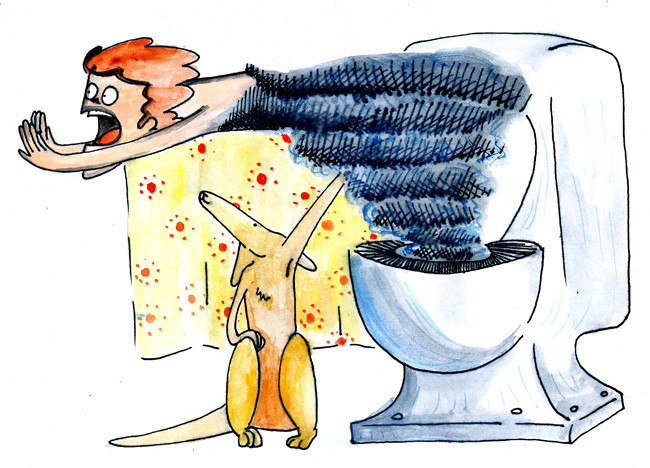Everything in Australia is backward: Its winter is our summer, cars drive on the left side of the road, mammals lay eggs and toilets flush in the opposite direction.
Well, not quite on that last one, but, if you believed it, you’d be in good company.
The idea stems from the fact that we live on a rotating planet. Depending on your latitude, this results in traveling at different speeds. A visitor near the North Pole barely moves at all, whereas, here in Austin, we’re traveling at around 900 miles per hour.
Fire a bullet at the equator and it’s still traveling at 1,000 miles per hour. But, since the ground below it is moving at the same speed, it doesn’t appear to travel nearly that fast. But, if you’re on a cruise ship due south of Austin at the equator and fire a gun toward our city, your bullet is going to hit to the right of where you aim, since it will have received an extra 100-mile-per-hour boost from the rotation of the Earth.
This “Coriolis effect” that causes the bullet to apparently turn in midair has major implications for ballistic motion, and, in theory, should have some effect on the water in our toilets.
The idea is that, as the water moves toward the drain, the northern water in the bowl — flowing toward the south — would veer left, while the southern water — flowing toward the north — would veer right, creating a counterclockwise motion.
The problem is that the Coriolis force is subtle and not powerful enough to affect our toilets: The bowls are too small and the flushes too quick.
But what about a larger tank that drains slowly? That sounds like a job for an expert in fluid mechanics.
In the early 1960s, MIT professor Ascher H. Shapiro induced the effect in a bathtub made with scientific precision.
He built a tub 6 feet in diameter and attached a 20-foot-long hose to a drain in the base. After plugging the hose, he filled the tank six inches using a clockwise flow to ensure the act of adding water didn’t create a counterclockwise motion. He also covered the tub with a plastic sheet to prevent air currents from influencing the experiment and kept the room at a constant temperature so as not to allow temperature variations that may have affected the direction of the swirl.
Even with all of those precautions and letting the water settle for an hour or so, it would still rotate in the clockwise direction when drained because of the filling process. Things got a little better after allowing four or five hours of settling — the water would initially travel clockwise but, by the end of the drain, would begin moving in a counterclockwise direction.
Twenty-four hours of settling was required to see the effect, but even this was subtle — there wasn’t any visible rotation until about 12 to 15 minutes into the 20-minute draining period when it began to flow in a counterclockwise direction.
A few years later, researchers in Australia replicated the experiment in the Southern Hemisphere, hoping to produce clockwise rotation. It did, but not without difficulties. The scientists noted that winds from outside the laboratory were enough to disturb the experiment, at least on a blustery day.
It is the nature of science that one cannot prove an idea to be correct. Experiments are designed to falsify premises and, though these tests ended up with results consistent with predictions based on Coriolis forces, there’s no way to ensure that there wasn’t some other force the scientists neglected. It’s only through continuously attempting to prove ourselves wrong that we can ever hope to be right.
And, if the experiments happen to turn out differently than we’d like them to, we need to be ready to flush our pet theories down the toilet — but not necessarily in a counterclockwise motion.















